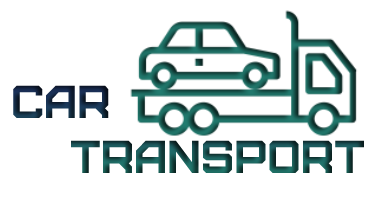Category Archives: classic car transport canada
Hauling Multiple Vehicles: Your Complete Guide
Hauling one vehicle is simple enough with a basic towing setup, but transporting multiple vehicles at once requires more specialized equipment and know-how classic car transport canada. In this comprehensive guide, we’ll cover everything you need to safely and efficiently haul two or more cars, trucks, SUVs, or other vehicles over the road.
Choosing the Right Towing Vehicle
The first step is selecting a tow rig that can handle the load. Your towing vehicle needs to be rated to pull the Gross Combined Weight Rating (GCWR) of all the vehicles being hauled.
- GCWR is the maximum allowable weight of the tow vehicle and all towed vehicles combined. This includes the empty weight of each vehicle plus cargo and passengers.
- Towing two compact cars is within the GCWR of many half-ton pickup trucks and full-size SUVs, but hauling heavy trucks or large SUVs may require a three-quarter ton or one-ton pickup classic car transport canada.
- Check the owner’s manual or door jamb sticker of the tow vehicle for its towing capacity. Exceeding this can put undue strain on the drivetrain and potentially cause accidents.
- Diesel engines provide better torque for hauling heavier loads over longer distances compared to gasoline engines.
- A trailer brake controller is essential for stability when towing multiple vehicles on a trailer. This activates the trailer brakes from within the tow vehicle classic car transport canada.
Choosing the Right Trailer
With the tow rig selected, it’s time to pick an appropriate trailer. Car haulers come in various styles for 2-6 vehicles.
- Enclosed trailers provide security and protect vehicles from weather, but have lower ground clearance. Open trailers sit taller.
- Make sure the deck rating of any trailer can support the total loaded weight of all vehicles being carried.
- Consider tilt-bed, slide-out, or combo trailers that make loading and unloading easier compared to standard flatbeds.
- Fenders, ramps, winches or jacks, tie-downs and safety chains should all be included based on your needs.
- Trailer brakes are mandatory for hauling multiple heavier vehicles at highway speeds for safety.
Properly Loading the Trailer
With the right towing rig and trailer in hand, it’s important to load everything safely and balanced.
- Always load the heaviest vehicle closest to the trailer tongue for best weight distribution and handling.
- Use wheel chocks and shut off all vehicles to prevent rolling during transport.
- Secure each vehicle independently to the deck using sturdy tie-down straps crossed under the body or frame at 45-degree angles.
- Inflate all tires to the maximum pressure listed, including the trailer tires. Under-inflated tires affect stability.
- Leave enough space between vehicles for air to circulate and prevent heat damage during travel.
- Balance the load side-to-side and ensure the tongue weight is 10-15% of the total weight for stability. Adjust as needed using a scale.
- Don’t overload the trailer. Leave 10-15% capacity open to account for passengers, cargo and tongue weight.
Driving Safety Tips
Once loaded, take time to familiarize yourself with towing multiple vehicles before hitting the open road. Practice makes perfect.
- Allow extra braking distance and avoid sudden stops or turns that could cause a vehicle to shift or sway.
- Slow down for turns, bridges, and rough roads where stability may be compromised.
- Be vigilant for unusual noises, vibrations, heat, or leaks in any of the vehicles that could indicate a problem.
- Monitor trailer brakes, bearings and lights frequently using mirrors since visibility is reduced towing multiple vehicles.
- Obey all vehicle weight and size regulations for highway travel, and use emergency flashers while towing.
- Take regular breaks to reduce fatigue on longer hauls. Towing multiple heavy loads requires concentration.
- Make timely service/maintenance stops to check wheel bearings and trailer components if necessary.
- Slow down in poor weather and drive based on road conditions, not speed limits, when hauling multiple vehicles. Safety first!
Hauling Multiple Vehicles Legally
Before hitting the road, make sure your towing configuration complies with local regulations which may differ in each state or province.
- Check vehicle length and width limitations for highways versus local roads. Multiple vehicles can exceed normal passenger vehicle sizes.
- Observe total gross weight, axle weight and tire load ratings to avoid overweight penalties that can be costly.
- Two or more vehicles may require a commercial license and special permits depending on the jurisdiction. Know the laws.
- Mark oversized vehicle loads clearly with signage or lights for visibility, especially at night or in low light conditions.
- Pull permits as needed for wide loads that may impede oncoming traffic lanes on narrow roads.
- Consider an escort vehicle in some areas for multi-vehicle transports exceeding certain size thresholds on busy highways.
- Check legal and safety requirements for towing across state or international borders which can have their own rules.
By understanding your equipment limits, properly preparing your vehicles for travel, exercising safe driving practices, and complying with applicable transport laws, you’ll be well-prepared to haul multiple cars or other vehicles in a responsible manner. Safe travels!


